Surgical versus non-surgical interventions for displaced intra-articular calcaneal fractures
- PMID: 37933733
- PMCID: PMC10628987
- DOI: 10.1002/14651858.CD008628.pub3
Surgical versus non-surgical interventions for displaced intra-articular calcaneal fractures
Abstract
Background: Fractures of the calcaneus (heel bone) comprise up to 2% of all fractures. These fractures are mostly caused by a fall from a height, and are common in younger adults. Treatment can be surgical or non-surgical; however, there is clinical uncertainty over optimal management. This is an update of a Cochrane Review first published in 2013.
Objectives: To assess the effects (benefits and harms) of surgical versus conservative treatment of displaced intra-articular calcaneal fractures.
Search methods: We searched the Cochrane Bone, Joint and Muscle Trauma Group Specialised Register, CENTRAL, MEDLINE, Embase, and clinical trials registers in November 2022.
Selection criteria: We included randomised controlled trials (RCTs) and quasi-RCTs comparing surgical versus non-surgical management of displaced intra-articular calcaneal fractures in skeletally mature adults (older than 14 years of age). For surgical treatment, we included closed manipulation with percutaneous wire fixation, open reduction with internal fixation (ORIF) with or without bone graft, or primary arthrodesis. For non-surgical treatment, we included ice, elevation and rest, or plaster cast or splint immobilisation.
Data collection and analysis: We used standard Cochrane methodological procedures. We collected data for the following outcomes: function in the short term (within three months of injury) or long term (more than three months after injury), chronic pain, health-related quality of life (HRQoL) and ability to return to normal activities, as well as complications which may or may not have led to an unplanned return to theatre.
Main results: We included 10 RCTs and two quasi-RCTs with 1097 participants. Sample sizes in studies ranged from 29 to 424 participants. Most participants were male (86%), and the mean age in studies ranged from 28 to 52 years. In the surgical groups, participants were mostly managed with ORIF with plates, screws, or wires; one study used only minimally invasive techniques. Participants in the non-surgical groups were managed with a plaster cast, removable splint or a bandage, or with rest, elevation, and sometimes ice. Risk of performance bias was unavoidably high in all studies as it was not possible to blind participants and personnel to treatment; in addition, some studies were at high or unclear risk of other types of bias (including high risk of selection bias for quasi-RCTs, high risk of attrition bias, and unclear risk of selective reporting bias). We downgraded the certainty of all the evidence for serious risk of bias. We also downgraded the certainty of the evidence for imprecision for all outcomes (except for complications requiring return to theatre for subtalar arthrodesis) because the evidence was derived from few participants. We downgraded the evidence for subtalar arthrodesis for inconsistency because the pooled data included high levels of statistical heterogeneity. We found that surgical management may improve function at six to 24 months after injury when measured using the American Orthopaedic Foot and Ankle Society (AOFAS) score (mean difference (MD) 6.58, 95% confidence interval (CI) 1.04 to 12.12; 5 studies, 319 participants; low-certainty evidence). We are not aware of a published minimal clinically important difference (MCID) for the AOFAS score for this type of fracture. Previously published MCIDs for other foot conditions range from 2.0 to 7.9. No studies reported short-term function within three months of injury. Surgical management may reduce the number of people with chronic pain up to 24 months after injury (risk ratio (RR) 0.56, 95% CI 0.37 to 0.84; 4 studies, 175 participants; low-certainty evidence); this equates to 295 per 1000 fewer people with pain after surgical management (95% CI 107 to 422 per 1000). Surgical management may also lead to improved physical HRQoL (MD 6.49, 95% CI 2.49 to 10.48; 2 studies, 192 participants; low-certainty evidence). This outcome was measured using the physical component score of the 36-Item Short Form Health Survey. We used a change in effect of 5% to indicate a clinically important difference for this scoring system and thus judged that the difference in HRQoL between people treated surgically or non-surgically includes both clinically relevant and not relevant changes for those treated surgically. There may be little or no difference in the number of people who returned to work within 24 months (RR 1.26, 95% CI 0.94 to 1.68; 5 studies, 250 participants; low-certainty evidence) or who require secondary surgery for subtalar arthrodesis (RR 0.38, 95% CI 0.09 to 1.53; 3 studies, 657 participants; low-certainty evidence). For other complications requiring return to theatre in people treated surgically, we found low-certainty evidence for amputation (2.4%; 1 study, 42 participants), implant removal (3.4%; 3 studies, 321 participants), deep infection (5.3%; 1 study, 206 participants), and wound debridement (2.7%; 1 study, 73 participants). We found low-certainty evidence that 14% of participants who were treated surgically (7 studies, 847 participants) had superficial site infection.
Authors' conclusions: Our confidence in the evidence is limited. Although pooled evidence indicated that surgical treatment may lead to improved functional outcome but with an increased risk of unplanned second operations, we judged the evidence to be of low certainty as it was often derived from few participants in studies that were not sufficiently robust in design. We found no evidence of a difference between treatment options in the number of people who needed late reconstruction surgery for subtalar arthritis, although the estimate included the possibility of important harms and benefits. Large, well-conducted studies that attempt to minimise detection bias and that measure functional outcomes using calcaneal-specific measurement tools would increase the confidence in these findings. Given that minimally invasive surgical procedures are already becoming more prevalent in practice, research is urgently needed to determine whether these newer surgical techniques offer better outcomes with regard to function, pain, quality of life, and postoperative complications for intra-articular displaced calcaneal fractures.
Copyright © 2023 The Cochrane Collaboration. Published by John Wiley & Sons, Ltd.
Conflict of interest statement
SL (review author and Deputy Co‐ordinating Editor of the Bone, Joint and Muscle Trauma Group) has no known conflicts of interest. SL was not involved in the editorial process.
MP has no known conflicts of interest.
JS has no known conflicts of interest.
XG (Co‐ordinating Editor of the Cochrane Bone, Joint and Muscle Trauma Group) is funded by an National Institute for Health and Care Research (NIHR) Clinician Scientist Grant. Further funding from industry and charitable grants are and have been made available to his institution. All decisions relating to the design, conduct, analysis, write‐up, and publication of research are independent of these funders. He has ongoing expert consultancy with several companies; none involve the development of any implant for use in calcaneal fracture care. XG was not involved in the editorial process.
JB (guarantor) is Editor of the Cochrane Wounds Group. JB receives National Institute for Health and Care Research (NIHR) Health Technology Assessment and Programme Grants for Applied Research funding for non‐wound‐related rehabilitation research studies (2020 to present). JB is supported by NIHR Research Capability Funding via University Hospitals Coventry and Warwickshire NHS Trust. JB is a member of the NIHR Research for Patient Benefit Panel West Midland, UK.
Figures
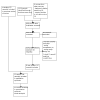
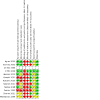


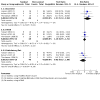
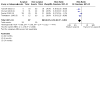

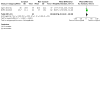
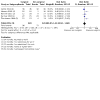

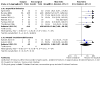
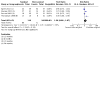
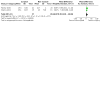
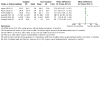
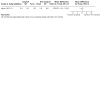
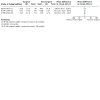
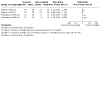
Update of
-
Surgical versus conservative interventions for displaced intra-articular calcaneal fractures.Cochrane Database Syst Rev. 2013 Jan 31;(1):CD008628. doi: 10.1002/14651858.CD008628.pub2. Cochrane Database Syst Rev. 2013. Update in: Cochrane Database Syst Rev. 2023 Nov 7;11:CD008628. doi: 10.1002/14651858.CD008628.pub3. PMID: 23440830 Updated.
References
References to studies included in this review
Agren 2013 {published data only}
-
- NCT01615744. Surgical vs conservative treatment of displaced intra-articular calcaneal fractures: a prospective RCT [Surgical vs. conservative treatment of displaced intra-articular calcaneal fractures: a prospective, randomized, controlled multicenter trial]. clinicaltrials.gov/show/NCT01615744 (first received 11 June 2012).
-
- Younger A. A calcaneal fracture study illustrates a need for better statistical methods for orthopaedic outcomes. Journal of Bone and Joint Surgery - American Volume 2013;95(15):111. - PubMed
-
- Ågren P-H, Mukka S, Tullberg T, Wretenberg P, Sayed-Noor AS. Factors affecting long-term treatment results of displaced intra-articular calcaneal fractures: a post hoc analysis of a prospective, randomized, controlled multicenter trial. Journal of Orthopedic Trauma 2014;28(10):564-8. - PubMed
-
- Ågren P-H, Wretenberg P, Sayer-Noor AS. Operative versus nonoperative treatment of displaced intra-articular calcaneal fractures. Journal of Bone and Joint Surgery - American Volume 2013;95(15):1351-7. - PubMed
Buckley 2002 {published data only}
-
- Barla J, Buckley R, McCormack R, Pate G, Leighton R, Petrie D, et al. Displaced intraarticular calcaneal fractures: long-term outcome in women. Foot and Ankle International 2004;25(12):853-6. - PubMed
-
- Brauer CA, Manns BJ, Ko M, Donaldson C, Buckley R. An economic evaluation of operative compared with nonoperative management of displaced intra-articular calcaneal fractures. Journal of Bone and Joint Surgery - British Volume 2005;87(12):2741-9. - PubMed
-
- Buckley R, Tough S, McCormack R, Pate G, Leighton R, Petrie D et al. Operative compared with nonoperative treatment of displaced intra-articular calcaneal fractures: a prospective, randomized, controlled multicenter trial. Journal of Bone and Joint Surgery - American Volume 2002;84(10):1733-44. - PubMed
-
- Buckley RE, Loucks C. Bohler's angle-correlation with long-term outcome in displaced intra-articular calcaneal fractures. Orthopaedic Transactions 1997;21(4):1349-50. - PubMed
-
- Dooley P, Buckley R, Tough S, McCormack B, Pate G, Leighton R. Bilateral calcaneal fractures; operative versus nonoperative treatment. Foot and Ankle International 2004;25(2):47-52. - PubMed
Chrintz 1993 {published data only}
-
- Chrintz H, Sonne-Holm S. Clinical results after conservative versus operative treatment of dislocated intraarticular fractures of calcaneus [Abstract]. Acta Orthopaedica Scandinavica - Supplementum 1993;251:64.
-
- Chrintz H, Sonne-Holm S. Radiograhic results after conservative versus operative treatment of dislocated intraarticular fractures of calcaneus [Abstract]. Acta Orthopaedica Scandinavica - Supplementum 1993;251:63-4.
Griffin 2014 {published data only}ISRCTN37188541
-
- Dickenson EJ, Parsons N, Griffin DR. Open reduction and internal fixation versus nonoperative treatment for closed, displaced, intra-articular fractures of the calcaneus: long-term follow-up from the HeFT randomized controlled trial. The Bone & Joint Journal 2021;103-B(6):1040-6. [PMID: ] - PubMed
-
- ISRCTN37188541. UK heel fracture trial: surgical treatment versus non-operative care [Improved functional outcome in heel fracture with surgical treatment versus non-operative care: a randomised controlled trial]. www.controlled-trials.com/ISRCTN37188541 (first received 7 February 2006).
-
- Lui TH, Ling SK. Calcaneal fractures have universally poor outcomes regardless of management. Evidence Based Medicine 2015;20(1):13. - PubMed
Hussain 2022 {published data only}
-
- Hussain F, Bhutto AM, Ahmed W, Palh HB, Mahar SA, Laghari AR, et al. A comparison between functional results in intra-articular displaced calcaneus fractures managed with conservative and operative treatment: a randomized controlled trial. Pakistan Journal of Medical and Health Sciences 2022;16:633-6. [DOI: ]
Kamath 2021 {published data only}
Kulkarni 2015 {published data only}
Nouraei 2011 {published data only}
Pandey 2018 {published data only}
-
- Pandey AK, Shrestha BP, Khanal GP, Rijal R, Pokharel B. Comparing closed reduction and percutaneous screw fixation versus below knee cast for closed displaced intra-articular calcaneal fracture – functional and radiological outcome. International Journal of Scientific Research 2018;7(2):67-9.
Parmar 1993 {published data only}
-
- Ibrahim T, Rowsell M, Rennie W, Brown A, Taylor G, Gregg P. Displaced intra-articular calcaneal fractures: 15 year follow-up of a randomised controlled trial of conservative versus operative treatment. Journal of Bone and Joint Surgery - British Volume 2009;91(Suppl 1):80. - PubMed
-
- Ibrahim T, Rowsell M, Rennie W, Brown AR, Taylor GJ, Gregg PJ. Displaced intra-articular calcaneal fractures: 15-year follow-up of a randomised controlled trial of conservative versus operative treatment. Injury 2007;38(7):848-55. - PubMed
-
- Lowrie IG, Triffitt PD, Gregg PJ. A controlled, prospective, randomised trial of operative versus conservative treatment of displaced intra-articular fractures of the os calcis: a preliminary report. Journal of Bone and Joint Surgery - British Volume 1990;72(5):948.
-
- Parmar H, Triffitt P, Lowrie I, Gregg PJ. A prospective randomized trial of operative and conservative treatment of displaced intra-articular fractures of the os calcis [Abstract]. Journal of Bone and Joint Surgery - British Volume 1992;74(Suppl 3):269.
-
- Parmar HV, Triffitt PD, Gregg PJ. Intra-articular fractures of the calcaneum treated operatively or conservatively. A prospective study. Journal of Bone and Joint Surgery - British Volume 1993;75(6):932-7. - PubMed
Sharma 2011 {published data only}
-
- Sharma V, Dogra A. Sanders type II calcaneum fractures - surgical or conservative treatment? A prospective randomized trial. Journal of Clinical Orthopaedics and Trauma 2011;2(1):35-8.
Thordarson 1996 {published data only}
-
- Thordarson DB, Krieger L. ORIF versus non-operative treatment of intra-articular fractures of the calcaneus: a prospective randomized trial [Abstract]. Orthopaedic Transactions 1997;21(2):584-5. - PubMed
-
- Thordarson DB, Krieger L. ORIF versus non-operative treatment of intraarticular fractures of the calcaneus: a prospective randomised trial [Abstract]. Orthopaedic Transactions 1996;20(1):23.
-
- Thordarson DB, Krieger LE. Operative versus nonoperative treatment of intra-articular fractures of the calcaneus: a prospective randomized trial. Foot and Ankle International 1996;17(1):2-9. - PubMed
References to studies excluded from this review
ACTRN12617001588381 {published data only}
-
- ACTRN12617001588381. Transarticular tibio-talo-calcaneal nailing versus open reduction and internal fixation for treatment of the elderly ankle fracture: a multi-centre, prospective, randomised controlled trial. www.anzctr.org.au/Trial/Registration/TrialReview.aspx?id=373765&isRe... (first received 2017).
Aslan 2019 {published data only}
-
- Aslan A, Sargın S, Gülcü A, Konya MN. Clinical, radiological and patient-reported outcomes in intra-articular calcaneal fractures: comparison of conservative and surgical treatment. Eklem Hastalik Cerrahisi 2019;30(2):143-8. [PMID: ] - PubMed
IRCT2016051327872N1 {published data only}
-
- IRCT2016051327872N1. Comparison between conventional and minimally invasive technique for treatment of calcaneal fracture. www.irct.ir/trial/22743 (first received 17 July 2017).
Kashani 2013 {published data only}
-
- Kashani MB, Kachooei AR, Ebrahimi H, Peivandi MT, Amelfarzad S, Bekhradianpoor N, et al. Comparative study of peroneal tenosynovitis as the complication of intraarticular calcaneal fracture in surgically and non-surgically treated patients. Indian Red Crescent Medical Journal 2013;15(10):e11378. [PMID: ] - PMC - PubMed
Li 2016 {published data only}
-
- Li B, Wu G, Yang Y. Conservative versus surgical treatment for displaced fracture of the medial process of the calcaneal tuberosity. Journal of Orthopaedic Surgery 2016;24(2):163-6. [PMID: ] - PubMed
Rajikumar 2017 {published data only}
-
- Rajikumar V, Bajuri MY, Ali-Noor I, Sridharan R. A 3D CT scan assessment of the outcome of displaced intra-articular calcaneal fractures; operative vs non operative treatment. Malaysian Orthopaedic Journal 2017;11 (Suppl A).
References to studies awaiting assessment
IRCT2017092720258N62 {published and unpublished data}
-
- IRCT2017092720258N62. Comparison of the minimally invasive surgical treatment outcomes of intra-extra articular calcaneal fracture’s and non operative treatment in Valiasr hospital. www.irct.ir/trial/18000 (first received 29 October 2017).
Additional references
BOFAS
-
- British Orthopaedic Foot & Ankle Society. Calcaneal fractures. www.bofas.org.uk/hyperbook/trauma/calcaneal-fracture#:~:text=The%20econo.... (accessed 22 August 2023).
Buckley 2014
-
- Buckley R, Leighton R, Sanders D, Poon J, Coles CP, Stephen D, et al. Open reduction and internal fixation compared with ORIF and primary subtalar arthrodesis for treatment of Sanders type IV calcaneal fractures: a randomized multicenter trial. Journal of Orthopaedic Trauma 2014;28(10):577-83. [PMID: ] - PubMed
Chan 2017
-
- Chan HY, Chen JY, Zainul-Abidin S, Ying H, Koo K, Rikhraj IS. Minimal clinically important differences for American Orthopaedic Foot & Ankle Society Score in hallux valgus Surgery. Foot & Ankle International 2017;38(5):551-557. - PubMed
Clarke 2007
-
- Clarke M. Fractures of the Calcaneus: Trauma. In: Saunders R, editors(s). Trauma: Core Knowledge in Orthopaedics. 1st edition. Philadelphia: Elsevier Mosby, 2007:386-402.
Dawson 2007
-
- Dawson J, Doll H, Coffey J, Jenkinson C, Oxford and Birmingham Foot and Ankle Clinical Research Group. Responsiveness and minimally important change for the Manchester-Oxford foot questionnaire (MOXFQ) compared with AOFAS and SF-36 assessments following surgery for hallux valgus. Osteoarthritis and Cartilage 2007;15(8):918-31. [PMID: ] - PubMed
Deeks 2011
-
- Deeks JJ, Higgins JPT, Altman DG (editors). Chapter 9: Analysing data and undertaking meta-analyses. In: Higgins JPT, Green S (editors). Cochrane Handbook for Systematic Reviews of Interventions Version 5.1.0 (updated March 2011). The Cochrane Collaboration, 2011. Available from training.cochrane.org/handbook/archive/v5.1/.
Fischer 2021
-
- Fischer S, Meinert M, Neun O, Colcuc C, Gramlich Y, Hoffmann R, et al. Surgical experience as a decisive factor for the outcome of calcaneal fractures using locking compression plate: results of 3 years. Archives of Orthopaedic and Trauma Surgery 2021;141(10):1691-9. [PMID: ] - PubMed
Folk 1999
-
- Folk JW, Starr AJ, Early JS. Early wound complications of operative calcaneus fractures: analysis of 190 fractures. Journal of Orthopaedic Trauma 1999;13(5):369-72. - PubMed
GRADEpro GDT [Computer program]
-
- GRADEpro GDT. Version accessed 14 February 2023. Hamilton (ON): McMaster University (developed by Evidence Prime). Available at gradepro.org.
Harris 1946
-
- Harris RI. Fractures of the os calcis: their treatment by tri-radiate traction and subastragalar fusion. Annals of Surgery 1946;124(6):1082-1100. - PubMed
Higgins 2011
-
- Higgins JPT, Green S (editors). Cochrane Handbook for Systematic Reviews of Interventions Version 5.1.0 (updated March 2011). The Cochrane Collaboration, 2011. Available from training.cochrane.org/handbook/archive/v5.1/.
Higgins 2023
-
- Higgins JPT, Thomas J, Chandler J, Cumpston M, Li T, Page MJ, Welch VA (editors). Cochrane Handbook for Systematic Reviews of Interventions version 6.4 (updated August 2023). Cochrane, 2023. Available from training.cochrane.org/handbook.
Humphrey 2019
-
- Humphrey JA, Woods A, Robinson AHN. The epidemiology and trends in the surgical management of calcaneal fractures in England between 2000 and 2017. The Bone & Joint Journal 2019;101-B(2):140-6. [PMID: ] - PubMed
Ibrahim 2007
-
- Ibrahim T, Rowsell M, Rennie W, Brown AR, Taylor GJS, Gregg PJ. Displaced intra-articular calcaneal fractures: 15-year follow-up of a randomised controlled trial of conservative versus operative treatment. Injury 2007;38(7):848-55. - PubMed
Kitaoka 1994
-
- Kitaoka HB, Alexander IJ, Adelaar RS, Nunley JA, Myerson MS, Sanders M. Clinical rating systems for the ankle-hindfoot, midfoot, hallux, and lesser toes. Foot Ankle International 1994;15(7):349-53. - PubMed
Koval 2006
-
- Koval KJ, Zuckerman JD. Handbook of Fractures. 3rd edition. Philadelphia: Lippincott, Williams & Wilkins, 2006.
Lefebvre 2019
-
- Lefebvre C, Glanville J, Briscoe S, Littlewood A, Marshall C, Metzendorf MI, et al. Chapter 4: Searching for and selecting studies. In: Higgins JPT, Thomas J, Chandler J, Cumpston M, Li T, Page MJ, Welch VA (editors). Cochrane Handbook for Systematic Reviews of Interventions version 6.0 (updated July 2019). Cochrane, 2019. Available from training.cochrane.org/handbook/archive/v6.
Luo 2016
-
- Luo X, Li Q, He S, He S. Operative versus nonoperative treatment for displaced intra-articular calcaneal fractures: a meta-analysis of randomized controlled trials. The Journal of Foot and Ankle Surgery 2016;55(4):821-8. - PubMed
McLaughlin 1963
-
- McLaughlin HL. Treatment of late complications after os calcis fractures. Clinical Orthopaedics & Related Research 1963;30:111-5. [MEDLINE: ] - PubMed
Meena 2017
-
- Meena S, Hooda A, Sharma P, Mittal S, Sharma J, Chowdhury B. Operative versus non operative treatment of displaced intraarticular fracture of the calcaneum: a meta-analysis of randomized controlled trials. Acta Orthopaedica Belgica 2017;83(1):161-9. [PMID: ] - PubMed
Razik 2018
Review Manager 2020 [Computer program]
-
- Review Manager (RevMan). Version 5.4. Copenhagen: The Cochrane Collaboration, 2020.
Schepers 2007
Schünemann 2019
-
- Schünemann HJ, Higgins JP, Vist GE, Glasziou P, Akl EA, Skoetz N, et al. Chapter 14: Completing ‘Summary of findings’ tables and grading the certainty of the evidence. In: Higgins JP, Thomas J, Chandler J, Cumpston M, Li T, Page MJ, et al, editors(s). Cochrane Handbook for Systematic Reviews of Interventions. 2nd edition. Chichester (UK): John Wiley & Sons, 2019:375-402.
Selim 2022
Sterne 2017
-
- Sterne JA, Egger M, Moher D, Boutron I (editors). Chapter 10: Addressing reporting biases. In: Higgins JP, Churchill R, Chandler J, Cumpston MS (editors), Cochrane Handbook for Systematic Reviews of Interventions Version 5.2.0 (updated June 2017), Cochrane, 2017. Available from training.cochrane.org/handbook/archive/v5.2.
Vosoughi 2022
-
- Vosoughi AR, Borazjani R, Ghasemi N, Fathi S, Mashhadiagha A, Hoveidaei AH. Different types and epidemiological patterns of calcaneal fractures based on reviewing CT images of 957 fractures. Foot and Ankle Surgery 2022;28(1):88-92. [PMID: ] - PubMed
Ware 2005
-
- Ware JE, Kosinski MA, Gandek B. SF-36 Health Survey: Manual and Interpretation Guide. Lincoln: Quality Metric Inc, 2005.
Zeng 2018
-
- Zeng Z, Yuan L, Zeng S, Sun Y, Huang F. Minimally invasive versus extensile lateral approach for Sanders type II and III calcaneal fractures: a meta-analysis of randomized controlled trials. International Journal of Surgery 2018;50:143-56. [PMID: ] - PubMed
References to other published versions of this review
Baliga 2010
Publication types
MeSH terms
Substances
LinkOut - more resources
Full Text Sources
Medical
Miscellaneous

